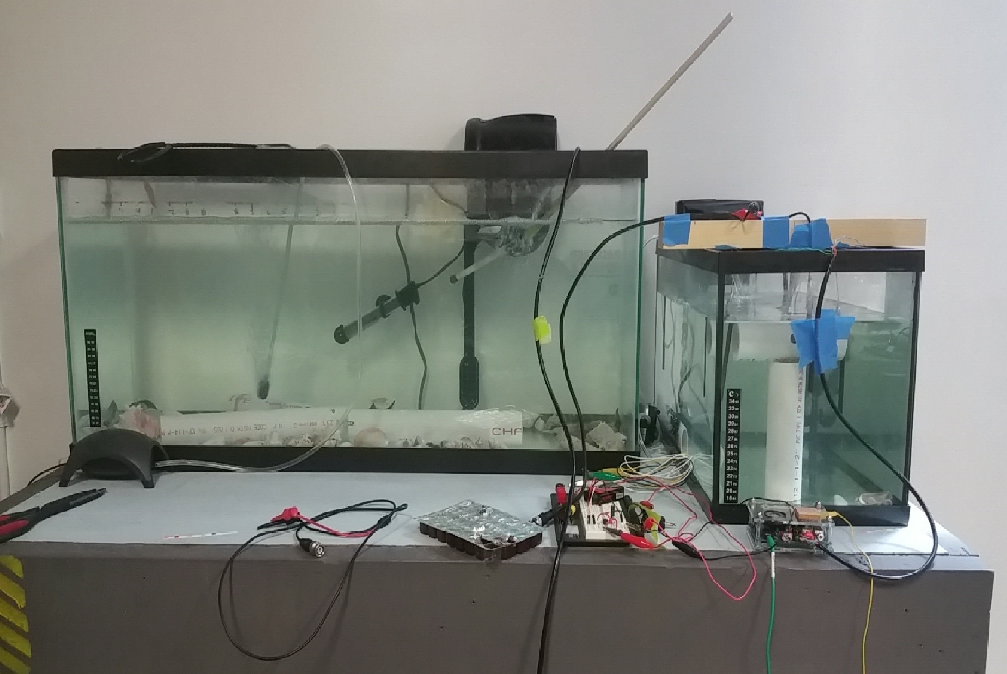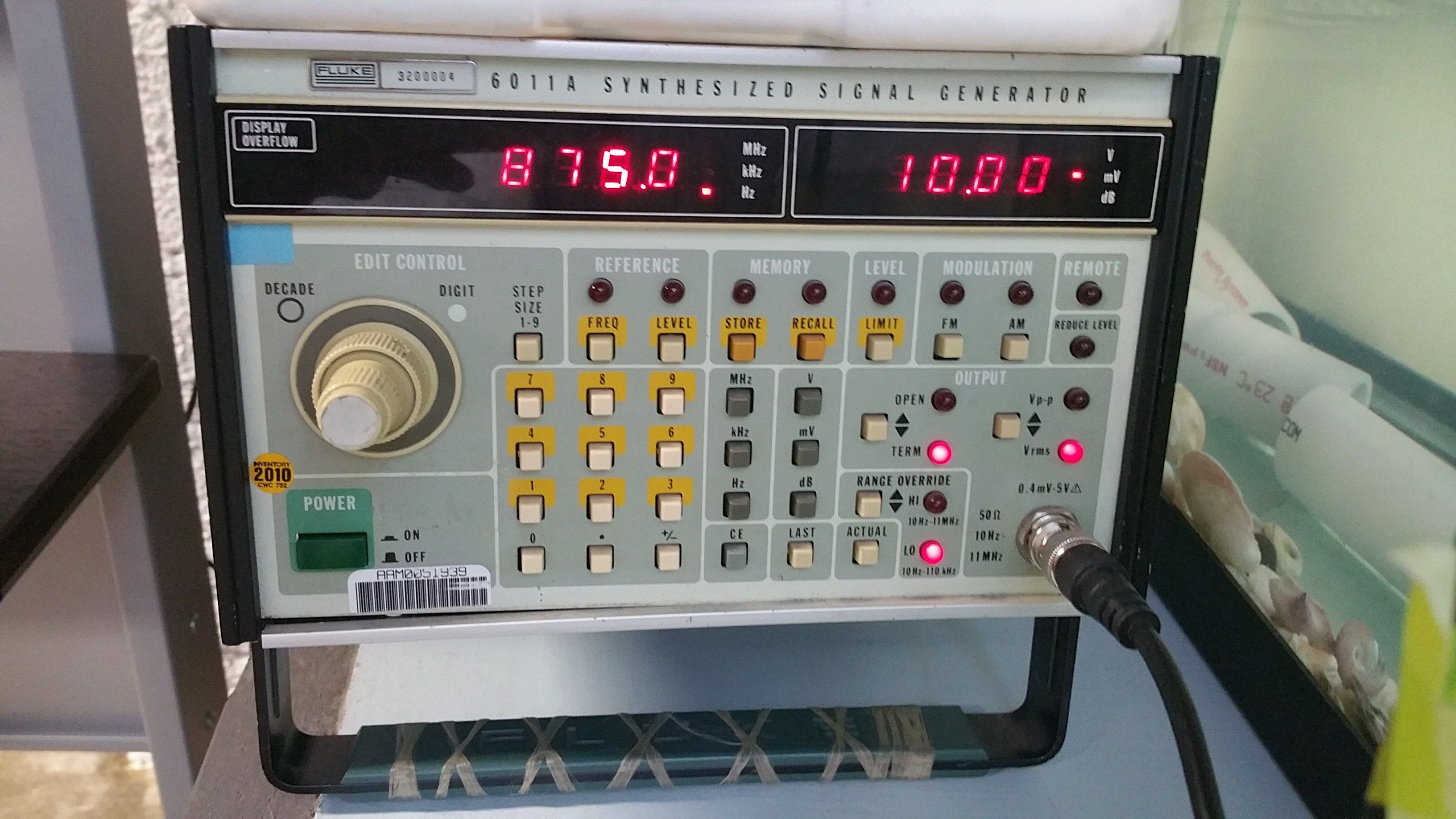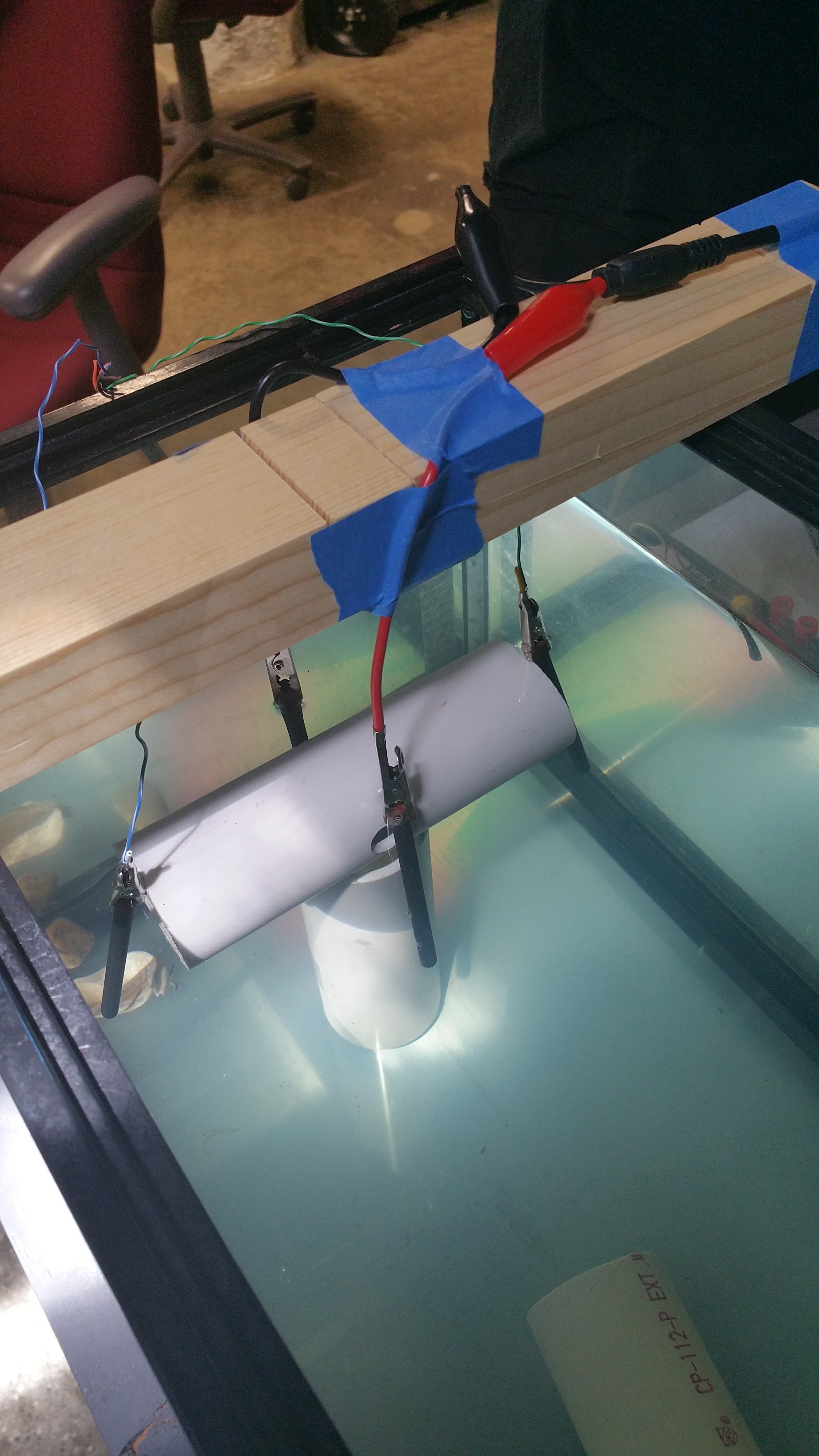The first phase of my project was to establish my workstation.
To start, I prepared two freshwater fish tanks -- a 40-gallon tank for the fish to live in and a 10-gallon tank for experimentation. These tanks included fixed heaters, water filters, and air pumps. These fish are comfortable between 73 and 80 degrees Fahrenheit and pH levels of 6.0 to 7.5. Consequently, conditions were held constantly at a temperature of 75 degrees Fahrenheit and a pH of 7.0. I fed the fish daily with frozen blood worms.
 The fish tanks with PVC pipes, heaters, water filters, and air pumps.
The fish tanks with PVC pipes, heaters, water filters, and air pumps.
Knife fish especially enjoy hiding in small enclosures so I purchased PVC pipes, 1.5 inches in diameter. These PVC pipes doubled as a recording chambers because the fish will voluntarily stay inside for hours on end. For my recording equipment, I placed carbon electrode rods on either side of the PVC pipe. I then used alligator clips to connect them to my Backyard Brains SpikerBox. Using the Spike Recorder application found on the Backyard Brains website, I could visualize the frequencies of the electric fish. I used a RadioShack speaker-amplifier to listen to the tones as well.

A Black Ghost Knife Fish relaxing in the recording chamber.
In order to stimulate the electric fish, I drilled a hole through both sides of the PVC pipe. I placed two more carbon electrode rods by these holes and clipped them to a function generator. For proof of concept, I wanted to start with a professional function generator to ensure clean data collection. I plan to use an alternative stimulation source in the future -- perhaps using the Arduino Zero's DAC.

I taped all the wires to a medium-sized wooden block for stability.
 The final set-up for the recording chamber
The final set-up for the recording chamber
Discussions
Become a Hackaday.io Member
Create an account to leave a comment. Already have an account? Log In.